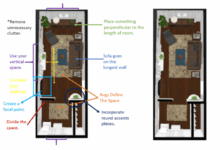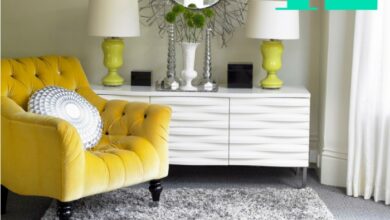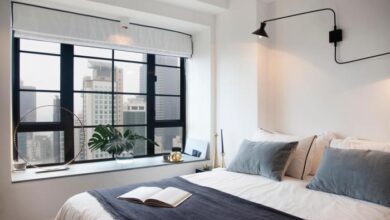The Power Of Mirrors In Small Room Interiors
Exploring The Power of Mirrors in Small Room Interiors reveals a fascinating world where reflective surfaces transform cramped spaces into realms of openness and light. Mirrors serve not just as decorative elements but as powerful tools that can enhance the perception of space, making even the tiniest rooms feel more expansive and inviting.
When placed thoughtfully, mirrors create an illusion of depth and brightness, allowing natural light to bounce around and illuminating dark corners. This dynamic interaction between light and reflection can significantly alter the mood of a small room, making it more vibrant and welcoming. By understanding how to use mirrors effectively, anyone can elevate their interior design and create a harmonious living environment.
Importance of Mirrors in Small Rooms
Mirrors serve as invaluable tools in small room interiors, offering both aesthetic appeal and practical benefits. Their ability to influence the perception of space can transform confined areas into inviting environments. By strategically placing mirrors, one can enhance the visual openness of a room, making it feel larger and more welcoming.Mirrors create an illusion of space in confined areas by reflecting light and the surrounding environment.
This reflection not only brightens the room but also gives the impression that the space continues beyond its physical boundaries. When light bounces off mirrors, it creates a vibrant atmosphere that counters the feeling of confinement typical in smaller spaces.
Psychological Effects of Mirror Placement
The placement of mirrors can significantly affect how we perceive the size of a room. When positioned correctly, mirrors can create a sense of depth, tricking the mind into feeling more expansive surroundings. The following benefits highlight the impact of mirrors on our psychological experience of space:
-
Enhanced depth perception:
Mirrors can visually extend the walls of a small room, providing a sense of greater distance.
-
Increased light reflection:
Mirrors capture natural and artificial light, brightening darker corners and making the space feel more open.
-
Improved ambiance:
A well-placed mirror can create a focal point, drawing attention and making the room feel more dynamic.
Furthermore, the psychological effects of mirrors extend beyond mere illusion. They evoke feelings of openness and comfort, which are essential in small living spaces. The presence of mirrors can reduce feelings of claustrophobia, allowing residents to feel more at ease in their environment.
Key Benefits of Using Mirrors
Utilizing mirrors in small room interiors yields numerous advantages that can enhance both functionality and design. These benefits provide a foundation for why mirrors are essential in such spaces:
-
Visual expansion:
Mirrors create a more extensive visual field, making small areas feel less restrictive.
-
Style versatility:
Available in various styles, mirrors can complement diverse interior designs, from modern to vintage.
-
Cost-effective decor:
Mirrors can be a budget-friendly solution for transforming a small space without major renovations.
In addition, mirrors can serve as decorative elements that enrich the overall design theme. By incorporating different shapes and sizes, one can add character and sophistication to the space. Consequently, mirrors are not just functional items; they are integral pieces that contribute to the overall ambiance and livability of small rooms.
Types of Mirrors for Small Spaces
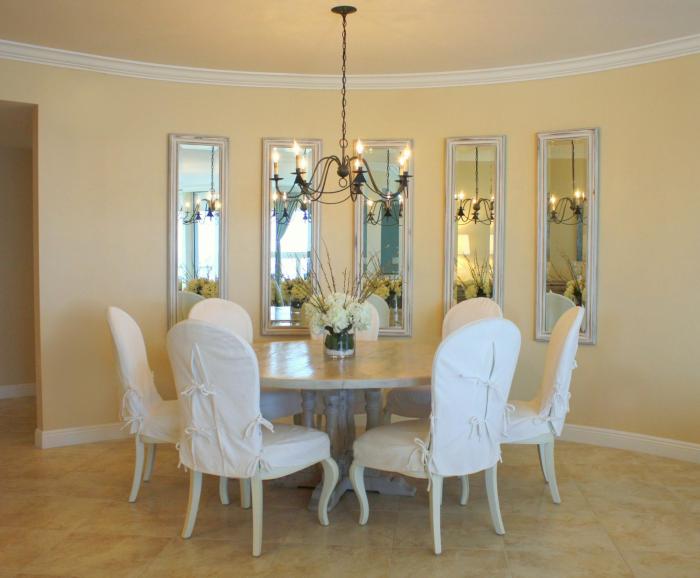
Source: ghar360.com
In small room interiors, mirrors play a transformative role, helping to create an illusion of space, enhance lighting, and add a touch of elegance. The right mirror can elevate the overall aesthetic while maintaining functionality. Understanding the types of mirrors that work best in these cozy environments can help you make informed design choices.Various mirror styles can be utilized effectively in small spaces, each offering unique benefits and adding to the overall charm of the room.
Here are some styles worth considering:
Overview of Mirror Styles
Different mirror styles allow for versatility in design. Selecting mirrors that complement the existing decor or serve as statement pieces can enhance the feel of the space. The following styles are particularly suited for smaller interiors:
- Wall Mirrors: Mounted directly onto walls, these mirrors can create a sense of depth and brightness in a small room. They are often large and can be framed or frameless, depending on your aesthetic preference.
- Floor Mirrors: While they take up floor space, strategically placed floor mirrors can reflect light and make a room appear larger. They are typically tall and can add drama to a corner or an entryway.
- Decorative Mirrors: Uniquely shaped or artistically framed mirrors serve as focal points, bringing personality to small spaces. Their designs can range from vintage ornate frames to modern geometric shapes.
- Mirrored Furniture: Items like mirrored dressers or side tables can double as mirrors while also serving functional purposes. They reflect light and maintain a cohesive look in minimalistic interiors.
Framed Versus Unframed Mirrors
The choice between framed and unframed mirrors is significant in small room design. Each type has its own advantages:
- Framed mirrors offer a decorative edge and can enhance the style of the room. The frame can be a statement piece, adding color, texture, or character. They often work well in traditional or eclectic spaces.
- Unframed mirrors provide a sleek and modern look, making them ideal for contemporary settings. They can blend seamlessly into walls or other decor, allowing the reflection to take center stage without distraction.
Both options can create stunning effects, but the decision should align with the overall style of the room.
Impact of Decorative Mirrors on Room Aesthetics
Decorative mirrors have the power to influence the visual appeal of a room significantly. They can be used to create stunning focal points or to enhance the overall design theme. The importance of decorative mirrors lies in their ability to:
-
Reflect light, making spaces brighter and more inviting.
- Create an illusion of space, making the room feel larger than it actually is.
- Add texture and dimension, bringing depth to flat surfaces and walls.
When choosing decorative mirrors, consider their placement and orientation. A mirror hung opposite a window can maximize natural light, while an ornate piece above a console table can draw the eye and serve as a conversation starter. The right decorative mirror becomes more than just a reflection; it transforms into a piece of art that enhances the ambiance of the entire room.
Strategic Placement of Mirrors
In small room interiors, the strategic placement of mirrors can transform the space, making it feel more open and inviting. Utilizing mirrors effectively can enhance the flow of light, create a sense of depth, and showcase artistic elements within the room. The following guidelines will help you optimize the positioning of mirrors in small spaces to maximize their impact.
Guidelines for Optimal Mirror Placement
To ensure that mirrors serve their purpose in small rooms, consider these essential guidelines for placement:
- Position mirrors opposite windows to reflect natural light, illuminating the room and creating an airy atmosphere.
- Hang mirrors at eye level to enhance usability and ensure they reflect more of the space around them.
- Place mirrors in narrow hallways or corners to create an illusion of wider space, making these areas feel less confined.
- Utilize large mirrors to serve as focal points, drawing the eye and adding elegance to the decor.
Techniques for Reflecting Views and Art
Incorporating mirrors to reflect interesting views or artwork can enhance the visual dynamics of a room. Here are some effective techniques:
- Position a mirror to capture an attractive outdoor view, such as a garden or picturesque landscape, bringing nature indoors.
- Place mirrors near pieces of art to draw attention to them, creating a gallery-like atmosphere.
- Opt for decorative mirrors with unique frames that complement artwork, enhancing the overall aesthetic of the room.
- Experiment with angles; tilting a mirror slightly can change what it reflects and highlight different aspects of the decor.
Maximizing Natural Light with Mirrors
Mirrors can be powerful allies in maximizing the natural light in small rooms. By following these practices, you can brighten up even the coziest spaces:
- Use multiple small mirrors to scatter light around the room, providing an even distribution of brightness.
- In darker corners, place a mirror to bounce light from windows or lamps, reducing shadows and enhancing the overall illumination.
- Select mirrors with a reflective, clear surface to ensure optimal light reflection; avoid tinted mirrors that may absorb light.
- In areas with limited light, such as basements or small bathrooms, consider mirrored furniture to expand the sense of light and space.
“Strategically placed mirrors are not merely functional; they are transformative pieces that can redefine the essence of a small room.”
DIY Mirror Projects for Small Interiors
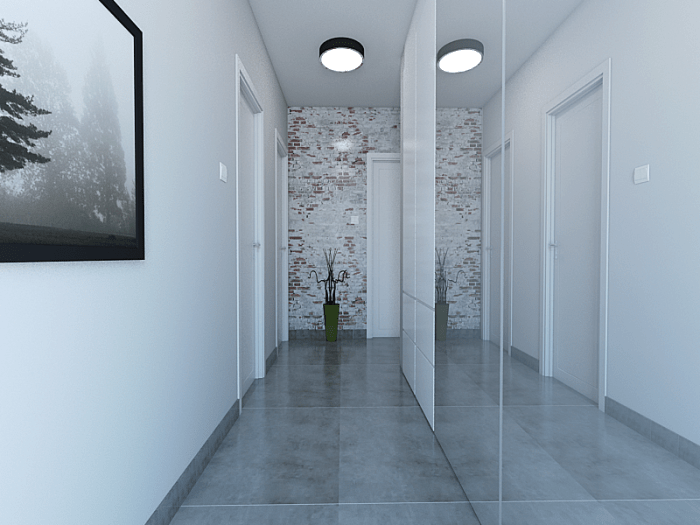
Source: wixstatic.com
Creating custom mirror designs can transform the ambiance of small spaces, making them feel larger and more inviting. With some creativity and basic tools, you can craft stunning pieces that reflect your unique style while enhancing the overall decor. This section explores various DIY mirror projects perfect for small interiors, offering step-by-step instructions and repurposing ideas.
Creating Custom Mirror Designs
Creating a custom mirror design not only personalizes your decor but also allows for artistic expression. Here’s a simple step-by-step guide to crafting a stunning framed mirror that suits your small room:
1. Materials Needed
A plain mirror (available at craft stores)
Decorative frame or molding (wood, plastic, or metal)
Paint or stain (optional)
Adhesive or nails
– Sandpaper
Measuring tape
Level
2. Step-by-Step Instructions
Measure the Mirror
Start by measuring your mirror’s width and height to ensure the frame fits perfectly.
Choose a Frame Style
Decide on the style of the frame you want. For a modern look, opt for sleek lines, while ornate designs add a vintage appeal.
Prepare the Frame
If using wood, sand the edges to create a smooth surface. Paint or stain the frame as desired and let it dry completely.
Attach the Frame
Position the frame around the mirror, ensuring it is centered. Use strong adhesive or nails to secure it in place.
Hang the Mirror
Once the adhesive is dry, find a suitable wall. Use a level to ensure it hangs straight, and secure it using wall anchors or hooks designed for heavier items.
Repurposing Old Mirrors into Unique Decor Pieces
Old mirrors can be given new life through creative repurposing. Instead of discarding them, consider these imaginative ideas that can enhance your small interior:
Mirror Collage
Combine several smaller mirrors of different shapes and sizes to create a striking collage on a wall. This adds depth and visual interest, making the room appear larger.
Mirror Tray
Repurpose a small, framed mirror as a stylish tray for displaying candles, plants, or jewelry. This functional decor piece adds elegance while maximizing your display space.
Artistic Wall Panel
Use old mirrors to create a unique wall panel. Arrange them in a pattern, then secure them together with glue or brackets to form a decorative art piece that reflects light beautifully.
Tips for Safely Installing Mirrors
Safety is paramount when installing mirrors, especially in smaller spaces where accidents can be more frequent. Here are essential tips to ensure a secure and safe installation:
Check Wall Structure
Before hanging, use a stud finder to locate wall studs for secure anchoring. Avoid placing heavy mirrors on drywall alone.
Use Appropriate Hardware
Select wall anchors or hooks rated for the weight of your mirror. Ensure they are well-suited for the wall type, whether it’s drywall, concrete, or tile.
Height Placement
Hang mirrors at eye level for the best visual effect. This height also minimizes the risk of accidental knocks.
Consider Non-Slip Pads
Placing non-slip pads behind the mirror can help prevent slipping or sliding, especially for larger pieces leaning against the wall.
Periodic Checks
Regularly check the stability of the mirror installation, ensuring that no screws or anchors have loosened over time.
Color and Finish Considerations
The choice of color and finish for mirror frames can significantly influence the overall aesthetic of small room interiors. Mirrors not only serve a functional purpose but also enhance the visual appeal of a space. When thoughtfully selected, they can complement or contrast with the room’s colors, creating a cohesive or dynamic look. The right frame color can either blend seamlessly with the walls and furniture or provide a striking contrast that draws attention.
For instance, a mirror with a white or light wood frame can create a soft, airy feel in a pastel-themed room. Conversely, a dark, bold frame can serve as a focal point against lighter hues, adding depth and character.
Complementing Room Colors
When selecting mirror frames, consider the color palette of the room to achieve a harmonious balance. The impact of frame color can differ significantly based on the room’s existing shades.
- Neutral Shades: Gray, beige, or cream frames work well in most settings, providing versatility while supporting a serene ambiance.
- Bold Colors: A vibrant blue or deep green frame can infuse energy into a neutral room, making it feel more lively and welcoming.
- Metallic Finishes: Gold, silver, or bronze frames add a touch of glamour, perfect for modern or eclectic designs.
Suitable Finishes for Mirrors
The finish of a mirror frame plays a crucial role in enhancing small room themes. Various finishes can evoke different moods and complement specific styles.
- Matte Finishes: Ideal for contemporary and minimalist spaces, matte frames provide a subtle elegance without overwhelming the design.
- Glossy Finishes: High-shine frames reflect light beautifully, which can make a small room feel brighter and more open.
- Textured Finishes: Frames with intricate textures or patterns can add interest and depth, suitable for bohemian or rustic themes.
Impact of Glass Tints and Treatments
The type of glass used in a mirror can greatly affect the ambiance and functionality of a small space. Different tints and treatments not only influence the visual appeal but also the perception of light and space.
- Clear Glass: The standard choice, providing an unaltered reflection and maximizing light flow.
- Tinted Glass: Subtle colors like bronze or gray can soften the reflections, creating a more inviting atmosphere.
- Antique Glass: Provides a vintage look, perfect for creating a sense of history and charm in rustic or period-themed rooms.
Choosing the right color and finish for mirror frames can transform a small room, enhancing both its beauty and functionality.
Functional Uses of Mirrors
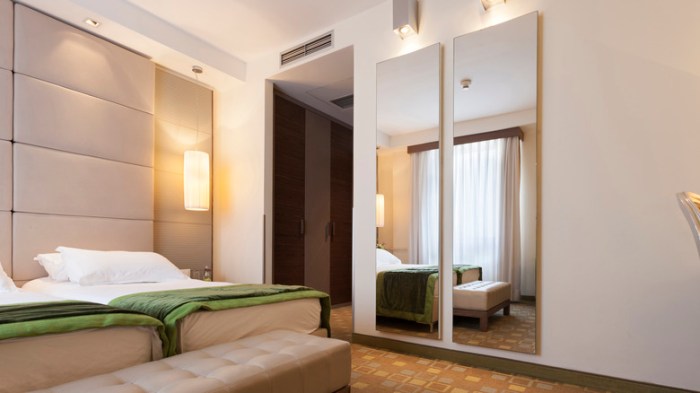
Source: housedigest.com
Mirrors serve more than just an aesthetic purpose in small room interiors. They can be practical tools that enhance both the functionality and organization of a space. By thoughtfully incorporating mirrors, one can achieve a blend of beauty and utility, all while maximizing the limited dimensions of small areas.Beyond their reflective qualities, mirrors can also provide essential storage solutions. They can be integrated into furniture designs, offering a clever way to save space while maintaining a stylish appearance.
This multifaceted use of mirrors not only enhances the visual appeal of a room but also contributes to a more organized and efficient living environment.
Storage Solutions Using Mirrors
Mirrors can be ingeniously transformed into functional storage elements. By integrating mirror surfaces into furniture pieces, one can create versatile designs that fulfill dual purposes. Here are some effective ways mirrors can contribute to storage solutions in small spaces:
- Mirrored Cabinets: These serve as stylish storage units while reflecting light, making rooms feel larger. They can house essentials like toiletries or everyday items, keeping them out of sight yet easily accessible.
- Mirror-Backed Shelves: Installing shelves with a mirrored backing not only showcases decorative items but also creates an illusion of depth, making the space feel more expansive.
- Mirrored Furniture: Items like coffee tables or dressers with mirror surfaces can hide compartments for storing books, linens, or personal belongings without cluttering the visual space.
- Wall-Mounted Mirror Organizers: These functional designs combine mirrors with hooks or shelves, providing an ideal spot for keys, bags, or accessories, all while reflecting the light and style of the room.
Innovative Incorporation of Mirrors
Innovative designs have led to unique ways of incorporating mirrors into furniture, enhancing both their beauty and functionality. Some notable examples include:
- Mirrored Bed Frames: Bed frames with mirrored accents not only serve as a focal point but also include hidden storage spaces for bedding or seasonal clothing.
- Sliding Mirror Doors: Utilizing mirrors on sliding closet doors opens up space and adds depth, providing a seamless transition between the closet and the room.
- Multi-Functional Mirrors: Mirrors that double as desks or vanities can save space in small rooms while providing necessary functionality without sacrificing style.
- Custom Mirror Art Pieces: Designing art installations with mirrors can create unique focal points that reflect light and improve the overall ambiance of the room.
Enhancing Functionality with Mirrors
Mirrors significantly enhance the functionality of small spaces by providing visual expansion and improving lighting. Their strategic placement can create a brighter, more inviting atmosphere. Some effective uses include:
- Light Reflection: Positioning mirrors across from windows can amplify natural light, reducing the need for artificial lighting during the day.
- Visual Flow: Placing mirrors in hallways or narrow areas can create a seamless flow, making transitions feel less confined.
- Focal Points: A well-placed large mirror acts as a focal point, drawing attention away from compact room dimensions and adding elegance.
- Spatial Illusion: Utilizing mirrors on opposing walls can create an illusion of depth, making a small room feel more spacious and open.
Cultural Perspectives on Mirrors
Mirrors have long held a significant place in various cultures, serving not only as functional objects but also as potent symbols of beauty, self-reflection, and spiritual significance. The way mirrors are utilized in interior design often reflects the beliefs and traditions of a culture, transforming spaces into representations of identity and heritage. Exploring these cultural perspectives unveils how mirrors can enhance the aesthetic and emotional essence of small interiors.Across the globe, mirrors are employed in diverse ways, deeply rooted in the traditions and philosophies of each region.
From the ornate designs of Moroccan interiors to the minimalistic approach in Scandinavian homes, mirrors serve as more than mere reflections; they are integral to the cultural narrative and spatial harmony.
Traditional Uses of Mirrors in Global Styles
Different cultures have distinctive approaches to mirror integration in their interior designs, often reflecting their historical and social contexts. Here are some notable examples of how mirrors are traditionally used around the world:
- Moroccan Style: In Moroccan homes, mirrors are often intricately framed and placed strategically to create an illusion of depth and light. These mirrors, combined with colorful tiles and textiles, add vibrancy and ornate beauty, embodying the richness of Moroccan culture.
- Japanese Zen: Japanese interiors embrace simplicity, and mirrors are used to amplify natural light and views of nature. Shōji screens, which incorporate reflective elements, enhance tranquility and a sense of spaciousness while harmonizing with the surrounding environment.
- Victorian Influence: In Victorian-era interiors, mirrors were used in abundance, often with elaborate gilded frames. These mirrors not only served a decorative purpose but also reflected the wealth and sophistication of the household, creating an opulent atmosphere.
- Indian Heritage: In traditional Indian homes, mirrors are often embedded into decorative wall panels or furniture. Known as “knotty glass,” these mirrors come alive with vivid colors and patterns, serving as focal points that reflect the vibrancy of Indian culture.
Mirrors also carry profound symbolism in various cultural contexts, reflecting broader notions of identity, self-perception, and the relationship between space and the individual.
“A mirror is not just a surface for reflection; it is a gateway to understanding oneself and one’s place in the world.”
In many cultures, mirrors symbolize introspection and self-discovery. For example, in some Indigenous traditions, mirrors are considered sacred and are used in rituals for guidance and reflection on one’s life path. In contrast, Western cultures often associate mirrors with vanity and superficiality, prompting a critical glance at societal values around beauty and self-image.Overall, the use of mirrors in interior design transcends mere decoration; it becomes a dialogue between culture, space, and individual identity.
Embracing these cultural perspectives allows for a richer understanding of how mirrors can transform small room interiors into meaningful spaces that resonate with historical and personal significance.
Ultimate Conclusion
In conclusion, the thoughtful incorporation of mirrors in small room interiors not only enhances the aesthetic appeal but also plays a crucial role in maximizing space and light. By exploring different styles, placements, and functional uses of mirrors, we have seen how they can transform a confined area into a spacious sanctuary. Ultimately, mirrors are more than mere reflections; they are keys to unlocking the full potential of our living spaces.
Helpful Answers
How do mirrors enhance the perception of space?
Mirrors create visual depth by reflecting light and views, making a small room appear larger than it is.
What types of mirrors are best for small rooms?
Framed mirrors offer a polished look, while unframed mirrors provide a more modern and seamless feel; both can enhance aesthetics.
Can mirrors help with lighting in small spaces?
Yes, mirrors can reflect natural light, brightening dark corners and making the space feel more open and airy.
Are there any safety concerns with hanging mirrors?
It’s important to securely mount mirrors using appropriate hardware to prevent accidents, especially in high-traffic areas.
How can I repurpose old mirrors in my decor?
You can turn old mirrors into unique art pieces, create a gallery wall, or use them in furniture designs to add charm.

